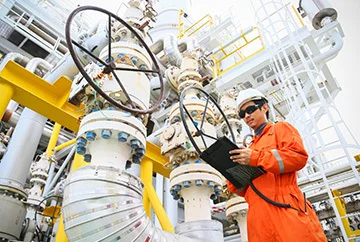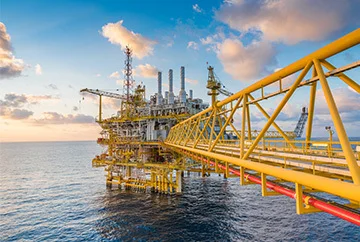Lower Costs of Maintenance
Augmented reality in oil and gas has transformed the art of remote troubleshooting by enabling the field technicians to immediately connect and provide a real-time feed of the assets and equipment to the right technical expert.
On average, it takes around ten days for a technician to survey, report, and analyze a site. However, with the advent of AR/VR technology, the subject matter expert can use its features to guide the technician through the troubleshooting process through a series of visual steps.
For instance,
GE designed a smart helmet that connects with expert technicians in remote locations to fix malfunctioning equipment at a customer site, saving effort, cost, and time. It ensures that the experts are within easy reach at any place, leaving out the transportation costs of getting them to the field. The expenses incurred during the downtime of the asset are also minimized as the issues are addressed quickly and expertly under guidance from anywhere.
Highly Skilled and Productive Workforce
AR-enabled wearables increase a field service technician's accuracy, efficiency, and decision-making. These wearables are used to provide digital checklists of regular tasks, create voice notes during repairs, offer notifications or reminders on upcoming or pending jobs, thereby increasing the engineer's productivity.
The VR training simulators help provide quick access to visual instructions and Standard Operating Procedures (SOPs) from handbooks and manuals to troubleshoot and tackle issues preemptively. Dynamic simulators are leveraged to mimic real-life scenarios to upskill engineers to work in a complex environment. Several case studies highlight how AR/VR technologies enable improved productivity and faster decision-making.
Business Case for Embracing AR/VR in Oil & Gas Industry
Click to zoom in
Better Responses to Adverse Events
VR simulations of the O&G site immensely enhance the response to adverse incidents and accidents by providing complete visibility of the impact site to the rescue personnel. These simulations also ensure better preparedness to face adverse events by enabling the rescue team to simulate various scenarios and plan the response.
Safer Oil Rigs and Wells
There is a significant value in using AR applications to improve oilfield safety by efficiently relaying necessary information in real-time. The pre-programmed information and directives provided by the AR-enabled system can support field operatives to ensure the safe undertaking of any job. For example, AR headsets, smart glasses help technicians to get location coordinates.
In the event of an emergency, a simple AR app can guide field technicians in reaching safer destinations or locating injured personnel. This also helps the O&G sites adhere to the prescribed safety regulations.





